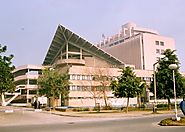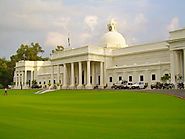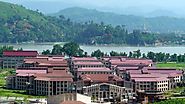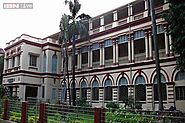-
About
- About Listly
- Community & Support
- Howto
- Chrome Extension
- Bookmarklet
- WordPress Plugin
- Listly Premium
- Privacy
- Terms
- DMCA Copyright
- © 2010-2025 Boomy Labs


 Soubin Nath
Soubin Nath
Listly by Soubin Nath
The Times Higher Education World University Rankings 2015-2016 list the best global universities and are the only international university performance tables to judge world class universities across all of their core missions - teaching, research, knowledge transfer and international outlook.
Times rates these as the 10 best universities in India.
Source: https://www.timeshighereducation.com/world-university-rankings/2016/world-ranking#!/page/0/length/25

The Indian Institute of Science (IISc) was founded in 1909 as a result of the joint efforts of Jamsetji Nusserwanji Tata, the Government of India, and the Maharaja of Mysore. In 1886, Jamsetji Tata conceived of a university of science that will work for the benefit of India, and in 1898 created an endowment for establishing such an institution. The Government of India then took up the effort, and, in consultation with scientists in England and in India, decided to locate the Institute in Bangalore, where the Maharaja of Mysore, Shri Krishnaraja Wodeyar IV, donated 372 acres of land. The Institute was formally vested in 1909, the foundation stone was laid in 1911, and the first batch of students started their studies in the same year.

IIT Bombay, the second in the chain of IITs, was set up in 1958. It was the first IIT to be set up with foreign assistance. The funds came from UNESCO in roubles from the Soviet Union. In 1961, the Parliament decreed IITs as 'Institutes of National Importance'. Since then, IIT Bombay has grown from strength to strength to emerge as one of the top technical universities in the world.

Indian Institute of Technology Delhi to contribute to India and the World through excellence in scientific and technical education and research; to serve as a valuable resource for industry and society; and remain a source of pride for all Indians.

The motto of IIT Kharagpur is "Yoga Karmashu Kaushalam" . The motto literally translates to "Excellence in action is Yoga" essentially implying that doing your work well is (true) yoga. It is sourced to Sri Krishna's discourse to Arjuna in Bhagavad Gita. This quote in its larger context of Gita urges man to acquire equanimity because such a soul endowed with the mind of equanimity allows him to shed the effects of his good and evil deeds in this world itself. Equanimity is the source of perfection in Karmic endeavors while leading to Salvation.

Indian Institute of Technology Madras is one among the foremost institutes of national importance in higher technological education, basic and applied research. In 1956, the German Government offered technical assistance for establishing an institute of higher education in engineering in India. The first Indo-German agreement in Bonn, West Germany for the establishment of the Indian Institute of Technology at Madras was signed in 1959.

Indian Institute of Technology Guwahati, the sixth member of the IIT fraternity, was established in 1994. The academic programme of IIT Guwahati commenced in 1995.
At present the Institute has eleven departments and three inter-disciplinary academic centres covering all the major engineering, science and humanities disciplines, offering BTech, BDes, MA, MDes, MTech, MSc and PhD programmes. Within a short period of time, IIT Guwahati has been able to build up world class infrastructure for carrying out advanced research and has been equipped with state-of-the-art scientific and engineering instruments.

Indian Institute of Technology, Kanpurestablished in 1959, is one of the premier institutions established by the Government of India. The aim of the Institute is to provide meaningful education, to conduct original research of the highest standard and to provide leadership in technological innovation.

Indian Institute of Technology Roorkee to be the fountainhead of new ideas and innovations in science and technology and continue to be a source of pride for all Indians.

The National Council of Education, Bengal, was established in 1906 in the wake of the nationalist movement. It was led by intellectuals, statesmen and the middle-class intelligentsia, and its aim was to cultivate the best of global learning and technology in order to build a self-reliant industrial base for India. Bengal Technical Institute was among the educational institutions founded by NCE, Bengal. Its mission was to impart training to Indian students in the appropriate technology so that the country could produce indigenous consumable materials. This Institute, later renamed College of Engineering and Technology, was in turn converted to Jadavpur University in 1955.

The University has been incorporated for the purpose, among others, of making provision for imparting education in Arts, Letters, Science and the learned professions and of furthering advancement of learning, the prosecution of original research, with power to appoint University Professors, Readers and Lecturers, to hold and manage educational endowments, to erect, equip and maintain University colleges, libraries, laboratories and museums, to making regulations relating to the residence and conduct of students and to do all such acts as tend to promote study and research

Born and brought up in Kerala, India. Now in Mumbai, India doing first year of my Masters in Film Studies (M.A)..